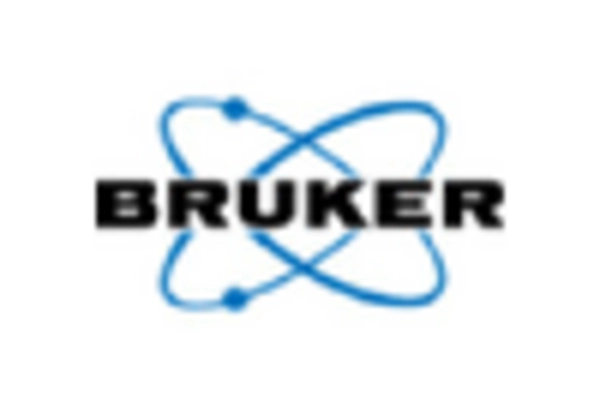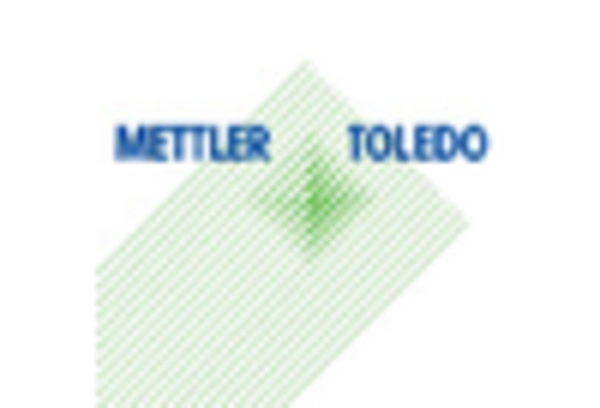Growing Demand for Quality Control
Quality control remains a critical aspect of various industries in Japan, particularly in pharmaceuticals, food and beverage, and environmental testing. The laboratory equipment market is poised to benefit from this growing demand, as companies increasingly prioritize compliance with stringent quality standards. In 2025, the market for laboratory equipment related to quality control is anticipated to expand by approximately 6%, driven by the need for accurate testing and analysis. This trend indicates that laboratories will require advanced equipment capable of delivering precise results, thereby enhancing their operational efficiency. As industries continue to face pressure to maintain high-quality products, the laboratory equipment market is likely to see a corresponding increase in the adoption of sophisticated testing instruments and technologies.
Expansion of Educational Institutions
The expansion of educational institutions in Japan is contributing to the growth of the laboratory equipment market. With an increasing number of universities and research centers being established, there is a heightened demand for laboratory facilities and equipment. In 2025, it is estimated that the number of higher education institutions in Japan will exceed 800, leading to a corresponding rise in the need for laboratory equipment. This trend suggests that educational institutions are investing in modern laboratories to provide students with hands-on experience in scientific research. Consequently, manufacturers are likely to focus on developing affordable yet high-quality laboratory equipment tailored to the needs of educational settings, thereby driving market growth.
Increased Focus on Environmental Testing
Environmental testing has gained significant traction in Japan, driven by heightened awareness of environmental issues and regulatory requirements. The laboratory equipment market is expected to benefit from this trend, as organizations seek to monitor and analyze environmental samples more effectively. In 2025, the market for laboratory equipment used in environmental testing is projected to grow by approximately 7%, reflecting the increasing need for accurate data on air, water, and soil quality. This growth is likely to encourage manufacturers to innovate and produce specialized equipment designed for environmental applications. As a result, the laboratory equipment market may witness a surge in demand for advanced analytical instruments that can provide reliable and timely results.
Technological Integration in Laboratories
The integration of advanced technologies in laboratories is transforming the landscape of the laboratory equipment market. In Japan, there is a growing trend towards automation and digitalization, which is enhancing the efficiency and accuracy of laboratory processes. By 2025, it is anticipated that the adoption of automated laboratory systems will increase by around 8%, driven by the need for streamlined operations and reduced human error. This shift towards technological integration suggests that laboratories will require sophisticated equipment capable of interfacing with digital platforms. Consequently, the laboratory equipment market is likely to see a rise in demand for smart devices and systems that facilitate data management and analysis, thereby improving overall laboratory performance.
Rising Research and Development Investments
The The laboratory equipment market in Japan is experiencing a notable surge in research and development (R&D) investments. in Japan is experiencing a notable surge in research and development (R&D) investments. This trend is driven by both public and private sectors aiming to enhance innovation in various scientific fields. In 2025, R&D expenditure in Japan is projected to reach approximately $200 billion, reflecting a growth of around 5% from the previous year. This increase in funding is likely to stimulate demand for advanced laboratory equipment, as researchers seek cutting-edge tools to facilitate their work. Furthermore, the emphasis on developing new pharmaceuticals and biotechnology products is expected to further propel the laboratory equipment market. As a result, manufacturers are likely to focus on producing high-quality, efficient, and specialized equipment to meet the evolving needs of the research community.

















Leave a Comment